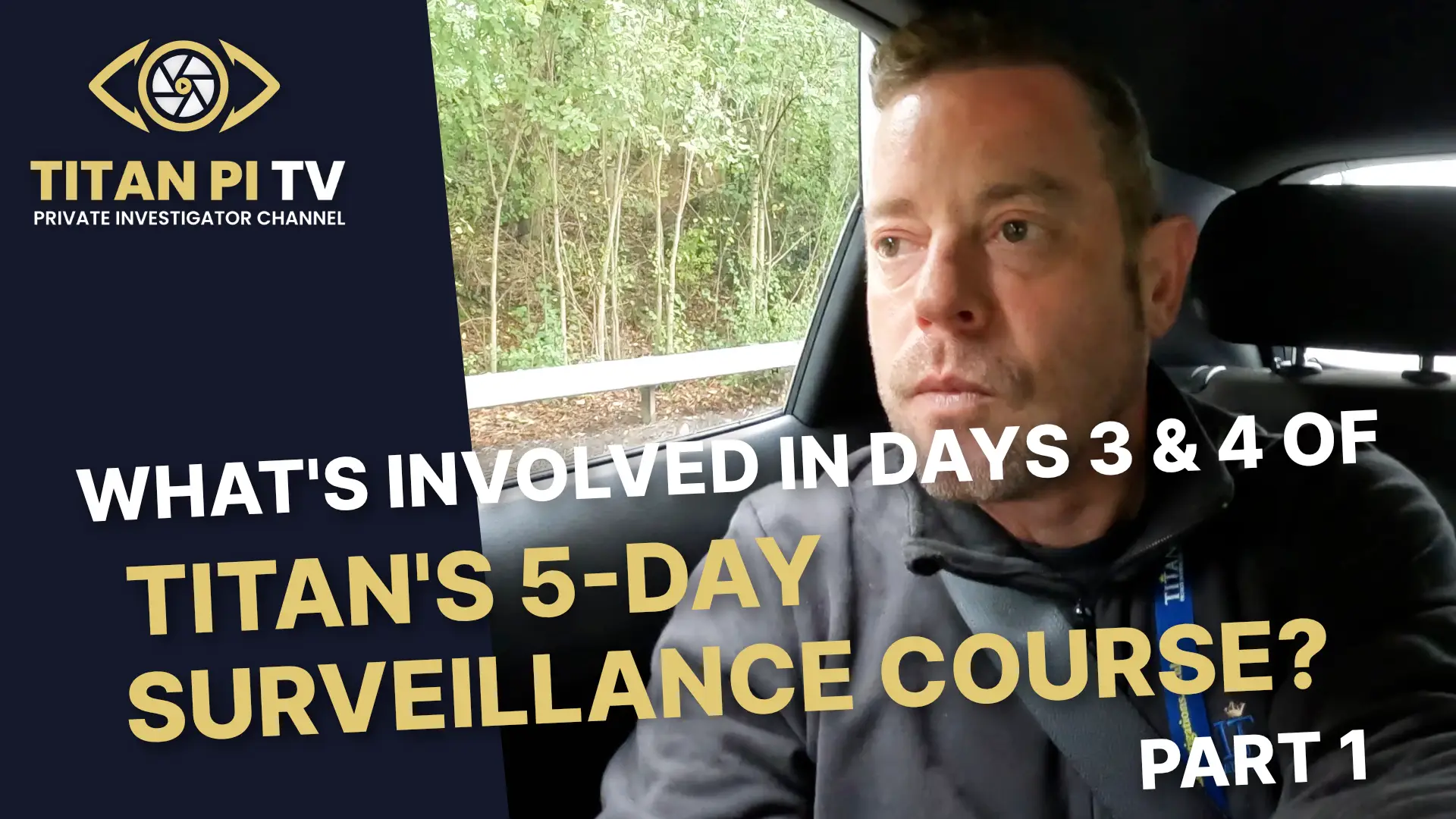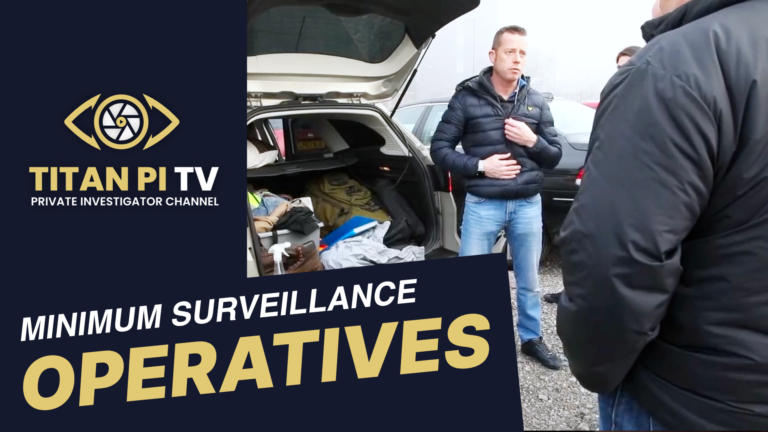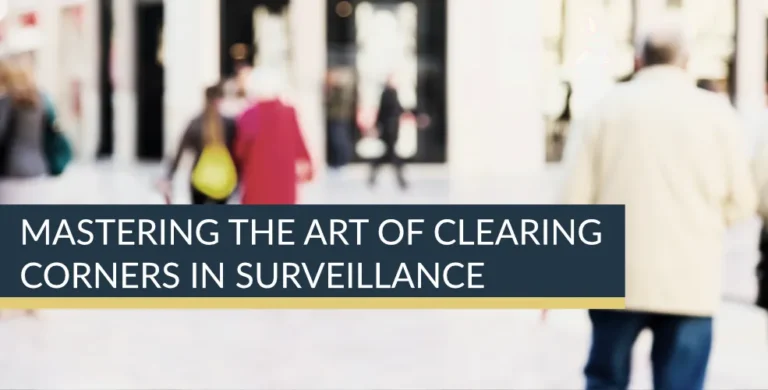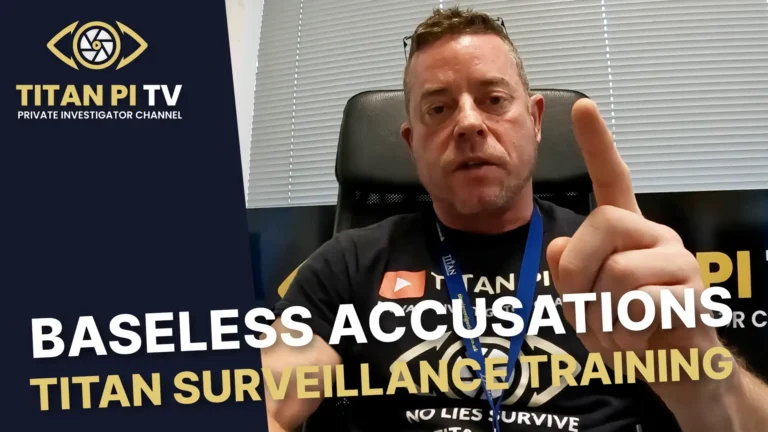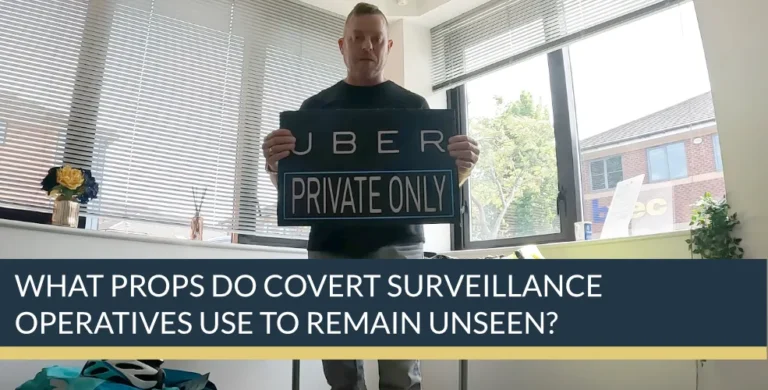What’s involved in days 3 and 4 of Titan’s 5-day Surveillance Course? – Part 1
Inside Titan’s Surveillance Course: Days Three and Four Uncovered
Titan PI TV continues to peel back the curtain on the world of professional private investigation. In the latest episode of the channel’s YouTube series, host and Titan’s Managing Director, Simon Henson, provides viewers with an in-depth look at what trainees encounter on days three and four of the company’s acclaimed five-day surveillance course.
This isn’t classroom theory or Hollywood dramatics — it’s real-life preparation for the fast-paced, high-pressure duties of modern surveillance professionals.
A Qualification for Serious Practitioners
Titan’s surveillance training isn’t a weekend crash course. It is rigorous, practical, and underpinned by the RQF Level 4 Award in Covert Surveillance Operations — equivalent to just above A-level standard. Delivered over five days, it pushes participants both intellectually and physically.
Students can choose whether to complete the assessment for the official qualification, but either way the content remains the same. The emphasis is on practical learning: hours on the ground, real vehicles, live subjects, and the same techniques Titan’s full-time investigators use daily in the field.
As Henson emphasised, “There’s a lot of work. By Day Three it steps up a gear.”
Day Three: The Shift to Vehicle Surveillance
While the first two days focus heavily on surveillance by foot, Day Three introduces students to mobile surveillance: observing and shadowing a subject in real traffic.
The pace changes dramatically. Decisions that once could be carefully considered on foot must now be made in split seconds. Students must master coordination, communication, and vehicle control while ensuring they remain undetected.
Training covers:
- Mobile Surveillance Tactics: Methods for positioning and shadowing subjects across differing speeds and road environments.
- Stop and Plot Drills: The art of creating a sterile zone around a stationary subject vehicle to ensure continuity of surveillance.
- Loss Procedures: A professional’s guide to recovering contact with a subject who has temporarily been lost. Here, Titan instils the “HELP” mnemonic:
- Honesty – Admit immediately when contact is lost.
- Early Call – Announce quickly so the team can respond.
- Location – Provide the last known position precisely.
- Procedure – Stick to the drill 100%.
Students spent the day in convoy — four vehicles, three trainees and one instructor apiece — shadowing subjects across Derbyshire. Hours of concentration were rewarded with a late-afternoon module on anti-surveillance techniques and static observation posts (OPs), further sharpening their abilities to detect when they might be under watch.
It’s a long haul: “Day Three is always an eleven-hour day,” Henson explained, with students returning home armed with evening homework to consolidate their lessons.
Day Four: Mastering Motorways and Imagery
Day Four pushes learners even further, extending the skillset into motorway and car park surveillance, combined with the technical mastery of evidential imagery.
Motorways: Unlike ordinary streets, motorways demand tailored strategy. At higher speeds, maintaining cover is delicate. Handovers — passing the responsibility of visual contact between vehicles — happen constantly. The lead tracking car (“eyeball”) must fall back smoothly while another discreetly moves forward. The effect is a “yo-yo” of movement, designed to both preserve cover and reduce suspicion.
Though training speeds are capped at 60mph, convoys still often reach 70–75mph as they work the tactics in real time.
Car Parks & Multi-Storeys: An entirely different battlefield. Car parks contain choke points, dead ends, and heightened risks of detection. Titan teaches a precise playbook for manoeuvring these environments covertly.
Imagery: Perhaps the most vital skill. As Simon bluntly observed — “You can be the best surveillance team in the world, but if you haven’t got the imagery to prove what happened, you’re the worst.”
Learners drill the fine points of:
- Date and time stamping.
- Correct use of surveillance cameras and lenses.
- Avoiding amateur mistakes (e.g., visible reflections of the inside of a car).
- Producing professional-grade evidential photographs and video suitable for clients and courts.
As Simon summarised, good imagery isn’t optional: “That’s what we’re judged on. You’re a professional, so act like one.”
Field Exercise: Starbucks Stakeout
To cement their understanding, students were briefed on a live operational scenario: the subject would start from a Starbucks location.
One trainee unit moved in on foot, securing visual contact, while others scrambled to locate the vehicle before departure. A sterile “plot” zone was established around a large roundabout, forcing the subject’s car into the surveillance net.
For many, the exercise’s intensity crystallised the theory from earlier sessions. It demanded coordination across four vehicles, decisions at every junction, and constant radio discipline.
The Role of Technology: Tracker Deployment
Day Four also introduces trainees to covert tracking devices.
Although not always used in real-world operations due to strict legal frameworks, trackers provide a crucial safety net during training. In this exercise, once the subject’s vehicle was located behind a BP garage, students deployed a tracker safely and undetected.
The tracker offered technological reassurance: even if contact was broken, the team could re-establish the subject’s location via technical support. “Happy days,” as Simon remarked — no total losses possible, only temporary ones.
Motorway Convoy: Trial by Speed
Once the lift was made and the subject went mobile from Derby, the convoy swung into action. Heading onto the northbound M1, learners had to execute their motorway tactics under real-world pressure.
Maintaining cover at speed, working handovers between four cars, and adjusting spacing while blending into the traffic flow tested their burgeoning skills to the limit.
As Simon noted, theory is one thing — motorway reality is another. Yet the structured build-up ensures that by Day Four, learners are ready to step into this environment.
Beyond the Basics: Bikes and Reports
Later that evening, attention shifted towards motorcycle surveillance. Though a separate specialist course, Day Four exposes all trainees to the unique role motorcycles play in surveillance teams. Bikes can weave through congestion, shadow subjects in urban areas, and provide eyes where cars cannot.
Understanding the dynamics of integrating motorcycles with standard vehicle teams is invaluable, even for those who remain four-wheel specialists.
Finally, students were expected to produce a client-style report of their day’s work. This exercise tests their ability to translate raw notes, imagery, and observations into a clear and professional client deliverable.
Why It Matters
Titan’s surveillance course is intense by design. The days are long, the content demanding, and the pace relentless. But Simon is candid: this is the reality of private investigation at the professional level.
Real clients don’t pay for textbooks or theory. They expect hard evidence, detailed reports, and results achieved without compromising legality or detection.
As Titan demonstrates across Days Three and Four, professional surveillance is not an art reserved for ex-military or law enforcement; it is a learned craft requiring skill, preparation, teamwork, and discipline.
Looking Ahead: Day Five and the Final Mission
The climax of the course comes tomorrow with Day Five’s final exercise — a full-scale surveillance operation lasting dawn to dusk.
Equipped with trackers, motorway tactics, and polished imagery, the students will attempt to prove they can operate as a professional surveillance unit under live conditions. Just as Titan’s real team does for corporate, legal, and private clients, the learners will be expected to deliver results in the field.
For Titan PI TV viewers following this series, the unfolding journey offers rare access into a profession defined by secrecy. For those considering a career, the programme makes clear: success comes only through effort, discipline, and trust in well-drilled procedure.
Watch the Full Episode
The full Day Three and Four breakdown is available now on Titan PI TV’s YouTube channel. Whether you’re a prospective student, industry professional, or simply curious about life inside a real private investigation agency, the episode provides unfiltered insight into an extraordinary training process.
Stay tuned for Part Two of Titan’s five-day course series — coming soon to Titan PI TV.
What’s Next on Titan PI TV?
Titan PI TV continues to grow steadily, with over 2,800 subscribers and counting—a testament to the appetite for straight-talking guidance in a complex field. If you found Henson’s insights useful, subscribe to the channel to catch future episodes. New content drops every Friday at 3:00 pm, offering grounded advice for investigators, agency owners, and professionals who work with them.
Thank you for reading, watching, or listening to this week’s blog post on Titan PI TV. For more expert advice and behind-the-scenes insights, subscribe to Titan PI TV on YouTube or download the Titan PI TV podcast wherever you get your podcasts. If you found this information helpful, please give us a thumbs up and subscribe to our channel. Stay tuned for more insights into the world of private investigations. Until next time, stay safe and keep learning!
Titan PI TV: Uncovering the Truth, One Investigation at a Time.

